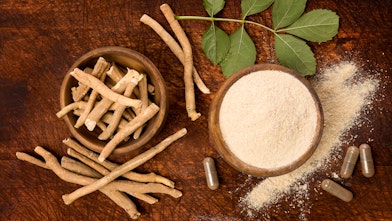What Causes Spoon-Shaped Nails?

The First Signs of a Nutrient Deficiency
Learn how to recognize early symptoms related to specific nutrient deficiencies
Receive a downloadable list of early indicators your body is lacking key nutrients

The First Signs of a Nutrient Deficiency
Learn how to recognize early symptoms related to specific nutrient deficiencies
Receive a downloadable list of early indicators your body is lacking key nutrients

The First Signs of a Nutrient Deficiency
Learn how to recognize early symptoms related to specific nutrient deficiencies
Receive a downloadable list of early indicators your body is lacking key nutrients

The First Signs of a Nutrient Deficiency
Learn how to recognize early symptoms related to specific nutrient deficiencies
Receive a downloadable list of early indicators your body is lacking key nutrients

The First Signs of a Nutrient Deficiency
Learn how to recognize early symptoms related to specific nutrient deficiencies
Receive a downloadable list of early indicators your body is lacking key nutrients

The First Signs of a Nutrient Deficiency
Learn how to recognize early symptoms related to specific nutrient deficiencies
Receive a downloadable list of early indicators your body is lacking key nutrients

The First Signs of a Nutrient Deficiency
Learn how to recognize early symptoms related to specific nutrient deficiencies
Receive a downloadable list of early indicators your body is lacking key nutrients

The First Signs of a Nutrient Deficiency
Learn how to recognize early symptoms related to specific nutrient deficiencies
Receive a downloadable list of early indicators your body is lacking key nutrients

The First Signs of a Nutrient Deficiency
Learn how to recognize early symptoms related to specific nutrient deficiencies
Receive a downloadable list of early indicators your body is lacking key nutrients

The First Signs of a Nutrient Deficiency
Learn how to recognize early symptoms related to specific nutrient deficiencies
Receive a downloadable list of early indicators your body is lacking key nutrients

How to Read Your Body
Learn to recognize common symptoms and uncover their underlying health issues
Understand the signs of nutrient deficiencies to manage your health
Explore the four metabolic body types and the core factors that influence them
Interpret your body's signals from head to toe to identify potential health concerns

How to Read Your Body
Learn to recognize common symptoms and uncover their underlying health issues
Understand the signs of nutrient deficiencies to manage your health
Explore the four metabolic body types and the core factors that influence them
Interpret your body's signals from head to toe to identify potential health concerns

How to Read Your Body
Learn to recognize common symptoms and uncover their underlying health issues
Understand the signs of nutrient deficiencies to manage your health
Explore the four metabolic body types and the core factors that influence them
Interpret your body's signals from head to toe to identify potential health concerns

How to Read Your Body
Learn to recognize common symptoms and uncover their underlying health issues
Understand the signs of nutrient deficiencies to manage your health
Explore the four metabolic body types and the core factors that influence them
Interpret your body's signals from head to toe to identify potential health concerns

How to Read Your Body
Learn to recognize common symptoms and uncover their underlying health issues
Understand the signs of nutrient deficiencies to manage your health
Explore the four metabolic body types and the core factors that influence them
Interpret your body's signals from head to toe to identify potential health concerns

How to Read Your Body
Learn to recognize common symptoms and uncover their underlying health issues
Understand the signs of nutrient deficiencies to manage your health
Explore the four metabolic body types and the core factors that influence them
Interpret your body's signals from head to toe to identify potential health concerns

How to Read Your Body
Learn to recognize common symptoms and uncover their underlying health issues
Understand the signs of nutrient deficiencies to manage your health
Explore the four metabolic body types and the core factors that influence them
Interpret your body's signals from head to toe to identify potential health concerns

How to Read Your Body
Learn to recognize common symptoms and uncover their underlying health issues
Understand the signs of nutrient deficiencies to manage your health
Explore the four metabolic body types and the core factors that influence them
Interpret your body's signals from head to toe to identify potential health concerns

How to Read Your Body
Learn to recognize common symptoms and uncover their underlying health issues
Understand the signs of nutrient deficiencies to manage your health
Explore the four metabolic body types and the core factors that influence them
Interpret your body's signals from head to toe to identify potential health concerns

How to Read Your Body
Learn to recognize common symptoms and uncover their underlying health issues
Understand the signs of nutrient deficiencies to manage your health
Explore the four metabolic body types and the core factors that influence them
Interpret your body's signals from head to toe to identify potential health concerns
Nutrient deficiencies, infections, and underlying health issues are common causes of abnormal fingernail growth. But what causes spoon-shaped nails?
Spoon-shaped nails, medically known as koilonychia, are characterized by thin, inward-curved nails that are often related to iron deficiency anemia.
Discover why poor dietary choices can lead to spoon-shaped nails and learn how to manage koilonychia naturally.

What is Koilonychia (spoon-shaped nails)?
Koilonychia, widely known as spoon nails, is a nail abnormality characterized by concave nail plates. These indented nails resemble a spoon shape and are noticeably hollow in the center compared to normal convex nail plates.
Spoon-shaped nails tend to have a deep indentation that typically develops gradually and is usually linked to nutritional deficiencies affecting the development and growth of fingernails.
However, other risk factors for developing spoon nails include underlying health issues such as systemic disease, inflammatory skin conditions, or autoimmune diseases.
Watch the video below to learn about the best remedies for spoon-shaped nails.
Spoon Nails: Causes & Treatments
How to identify spoon nails
Spoon nails develop most commonly on the fingers and can affect some or all of the nails. In more severe cases, this condition can extend to the nails on both hands and feet.
Affected nails appear scooped out with vertical or horizontal indentations. In addition to the hollow appearance, the outer edges of the nails curve upwards, further accentuating the spoon-like shape.
Spoon-shaped nails are often more brittle, thin, and pale than healthy pink ones. However, koilonychia doesn’t always manifest with noticeable changes in nail color.
You can identify spoon nails at home using the water drop test. To perform this test, simply drop water over your nail plate to determine if it pools. If your nail holds water, it may indicate the presence of spoon-shaped nails, as the concave shape creates a small reservoir.
Keep in mind that individuals with spoon-shaped nails may require further testing to determine the exact underlying cause and proper treatment.
If you notice your nails developing the characteristic concave shape of koilonychia, it's vital to seek medical advice.

What causes spoon-shaped nails?
The most common cause of spoon-shaped nails is iron deficiency, or anemia, characterized by a lack of sufficient red blood cells or hemoglobin to carry oxygen throughout the body.
Iron deficiency can lead to inadequate delivery of oxygen and nutrients to peripheral tissues such as the nail beds, which can result in changes to the structure of the nails. Without sufficient oxygen, the nails may become thin and brittle and take on a concave, spoon-like shape.
Research published in StatPearls found that koilonychia is more common in individuals with iron deficiency than those with normal iron levels.
Several factors can contribute to anemia, including internal bleeding from ulcers or hemorrhoids, excessive blood loss due to heavy menstrual periods, and malabsorption issues from inflammatory gastrointestinal conditions such as irritable bowel syndrome (IBS).
Additionally, low levels of hydrochloric acid (HCl) in the stomach can impair iron absorption, further contributing to iron deficiency anemia.
Vegetarian or vegan diets can also cause or worsen iron deficiency due to a lack of animal products containing heme iron, which is significantly more bioavailable than non-heme iron found in plants.
In addition to spoon nails, anemia may present with other symptoms, such as:
Fatigue and weakness
Shortness of breath
Pale skin
Arrhythmias
Cold hands and feet
Pica
Iron deficiency anemia is medically diagnosed with blood tests evaluating serum ferritin, a protein that contains and stores iron in the body’s tissues.
Other potential causes of spoon nails include autoimmune conditions such as lupus, poor blood flow to the hands and feet, or nail-patella syndrome, a genetic disorder that affects the nails.
Additionally, newborns and children who suck their thumbs may develop spoon nails, likely due to trauma to the nail bed.
A study published in Skin Appendage Disorders found that “Koilonychia is frequently idiopathic in newborns–especially on the big toe, where it is present in 33% of cases as a normal variant–and spontaneously regresses when the nail plate thickens after the age of 9 years.”

Managing spoon nails naturally
Information related to this specific medical condition should be discussed with a healthcare provider to determine suitability based on individual health needs.
Nail disorders often indicate poor nutrition, which explains why following a whole foods-based, iron-rich diet can support nail health in those with koilonychia.
Aiming to consume between 3 to 6 ounces (80 to 170 grams) of animal protein per meal is an excellent strategy for obtaining adequate amounts of iron and minimizing the risk of developing iron deficiency anemia and associated health issues.
Some of the best dietary sources of iron include:
Clams
Mussels
Oysters
Octopus
Red meat such as beef, pork, and venison
Additionally, many people utilize iron supplements to minimize the risk of anemia and prevent spoon nails. However, many dietary supplements are synthetic and can lead to iron accumulation in the body.
Too much iron retention from supplements can lead to iron toxicity, which is linked to stomach pain, nausea, vomiting, and organ damage with prolonged use.
“If you have a problem with spoon nails, the best way to combat it is to consume more iron-rich foods,” explains Dr. Berg. “However, food-based supplements, such as grass-fed liver pills, can also help boost iron levels with minimal side effects.”
In addition, you can promote healthy nail growth by avoiding nail polish and harsh chemicals and keeping the cuticles moisturized with coconut or almond oil.

Key takeaways
Concave, soft nails with lifted edges on the hands or feet characterize koilonychia. But what causes spoon-shaped nails?
Spoon nails are often linked to iron deficiency, and following a diet rich in animal products such as red meat, organ meats, and seafood can support healthy iron levels and promote normal nail growth.
However, koilonychia may also be caused by an underlying medical condition, and it’s vital to consult your healthcare provider to determine the exact cause of spoon-shaped nails.
FAQ
1. What causes spoon-shaped nails?
Spoon-shaped nails, also known as koilonychia, are often a sign of iron deficiency anemia. Iron deficiency commonly results from malabsorption, inflammatory intestinal conditions, excessive blood loss from hemorrhoids or heavy menstrual periods, or a vegan or vegetarian diet.
2. What do B12 deficiency nails look like?
Vitamin B12 deficiency can result in vertical hyperpigmentation streaks in the center of the nails. The discoloration may appear grayish-brown, bluish, or blue-black and is often combined with nail brittleness and breakage.
3. What do anemic fingernails look like?
Those who are anemic often have spooned fingernails, which cause the nails to concave into a spoon shape. Low iron levels can also lead to brittleness and nail-colored vertical ridges as a result of impaired oxygen transport to the nail bed.
4. What do liver failure nails look like?
Liver failure can cause the nail beds to appear white instead of a healthy pink color. A damaged liver may also lead to clubbed nails, which widen and curve the nail beds into a dome shape.
5. What can I do for spoon-shaped nails?
Following a nutritious diet high in iron-rich foods, such as red meat, organ meats, and seafood, can ensure optimal heme-iron intake. Natural beef liver supplements may also help boost iron levels and promote normal nail growth.
6. What’s the difference between spoon nails and nail clubbing?
Spoon nails are associated with chronic iron deficiency and cause a concave appearance similar to a spoon.
Conversely, nail clubbing is linked to liver, heart, or lung diseases, such as liver cirrhosis, heart failure, and chronic obstructive pulmonary disease (COPD). Clubbed nails are characterized by a widening of the fingertips and a noticeable curve in the nails, creating a dome-like shape.
Sources
Previous blog
Why Almond Flour Is the Best Flour for BakingTags

Popular
08/21/2024
55K views
02/23/2025
46.3K views
11/18/2024
277.5K views
03/18/2024
11/21/2022




